10 tips for choosing energy-saving lamps for home and apartment
It is hard to imagine how another century and a half ago, mankind dispensed with lighting lamps. After the appearance of this miracle of technology, for a long time we were content with ordinary incandescent lamps, but even they, like candles and kerosene lamps, are already disappearing. They are replaced by more economical lamps that consume less electricity and last for years. But how do we, who are accustomed to focus only on the power of a conventional lamp and its base, choose the right energy-saving lamp for home and apartment, because there are a huge number of them on store shelves? We were helped by real experts in this field, employees of the 220svet.ru online store, who for several years in a row have been helping Russians make their lives brighter and selling various kinds of lighting fixtures and lamps.
The store delivers products to all regions of Russia, and over many years of work has managed to establish cooperation with major manufacturers, so it offers its customers competitive prices. The company sells a huge number of lamps of various types and capacities.
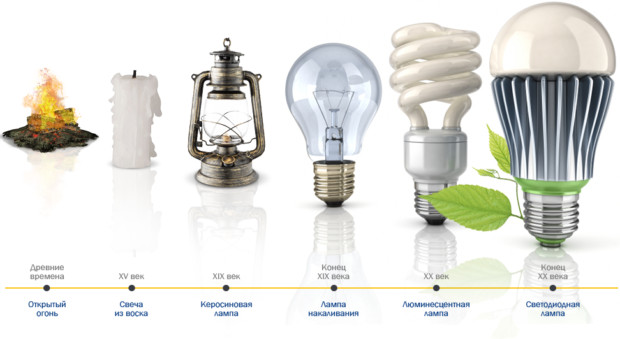
No. 1. When can you do without energy-saving lamps?
The whole world has recognized that energy-saving bulbs are the future, but cheap incandescent bulbs are still massively sold. So which lamps are better to use? For lamps that work at least 2-3 hours a day, it is better to take energy-saving lamps. In this case, the acquisition will pay off in a couple of years, and then full savings will begin.
When it comes to a lamp that turns on infrequently and for a few minutes a day (for example, pantries, basements and attics), then it will be more economical to use an incandescent lamp, at least while they are still being sold. By the way, the government has already limited the implementation of incandescent lamps with a capacity of more than 100 watts and its next step is likely to be a ban on lamps with a capacity of more than 50 watts.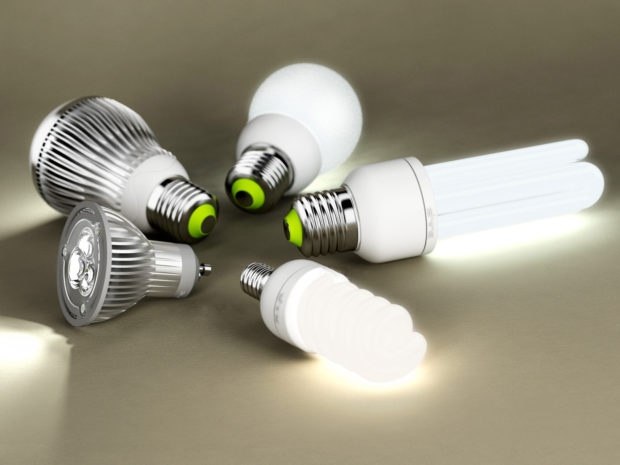
No. 2. Types of energy-saving lamps
Energy-saving lamps include:
- fluorescent lamps;
- LED lamp.
Looking ahead, we note that LED lamps outperform fluorescent in all respects: they are more durable, completely harmless, do not flicker, their luminous flux does not decrease over time. LED lamps lose only in terms of price, but in operation they are more economical.
Both versions of energy-saving lamps differ from incandescent lamps in that all electric energy is converted into visible light - Ilyich’s bulbs lose a significant part of their energy by converting it into heat.
Sometimes energy-saving lamps include halogenThat is not entirely correct. They are 2-3 times longer than conventional incandescent bulbs, but still significantly inferior to LED and fluorescent counterparts. A halogen lamp is actually the same incandescent lamp, only filled with vapors of bromine or iodine (substances belonging to the halogen group). In a conventional lamp, the tungsten atoms of which the spiral is made begin to evaporate and precipitate on cooler surfaces at high temperatures. This is the main reason for their low durability.If halogens are added to the flask, they will react with tungsten, and the resulting compounds will then decompose into the original components: part of the tungsten returns to the helix, and durability increases.
The service life of halogen lamps is 2-4 thousand hours, but when used together with a dimmer, the durability increases to 8-12 thousand hours. Such lamps have high color rendering quality, they are small, can be executed in interesting forms and do not require specific disposal. Not the longest service life and low profitability nevertheless do not allow classifying halogen lamps as energy-saving.
No. 3. Fluorescent energy-saving lamps
Fluorescent lamps are 5-20 times more durable than incandescent lamps and use 75% less electricity to create the same luminous flux. Visible light technology here is fundamentally different. In fluorescent lamps, an electric discharge passes through a pair of mercury and inert gases, causing ultraviolet light. It, when passing through a layer of phosphor deposited on the inner surface of the bulb, forms visible light.
Those lamps that are used in everyday life are more correctly called compact fluorescent tubes (CFL), since they are also made non-compact, which have very long flasks and are used in large rooms. CFLs have, as a rule, a bulb in the form of a swirling spiral and traditional screw caps, so that such incandescent lamps can easily be replaced with ordinary incandescent lamps.
The advantages of fluorescent lamps:
- high light output compared to incandescent lamps. From CFL with a power of 20 W you can get as much light as from a "Illich lamp" with a power of 100 W;
- the service life, which is on average 10,000 hours, but can be slightly longer, however, for this it is necessary to observe optimal operating conditions, in particular, to minimize the number of on and off;
- slight heating of the surface;
- a wide variety of shades of light, from warm white to cold white;
- the opportunity to get a nice diffused light.

The disadvantages of fluorescent lamps:
- the need for careful operation and proper disposal, since such lamps contain mercury, the amount of which can range from 2.3 mg to 1 g;
- sensitivity to voltage drops and frequent starts, from which the service life is reduced. Experts do not recommend the use of fluorescent lamps in public places and equip them with motion sensors. It is better not to turn off these lamps if you leave the room for a short time. The optimal indicator for achieving the greatest durability is 5 inclusions per day;
- the lamp needs some time to begin to shine at the maximum of its capabilities. At room temperature, it takes about 30-45 seconds;
- over time, the luminous flux of the lamp will decrease, which is associated with the degradation of the phosphor, so it is better to take a lamp with a small margin of power;
- unpleasant flicker;
- complex wiring diagram;
- sensitivity to high temperatures, so such lamps are best not to be used in fixtures that limit heat dissipation.
When using fluorescent lamps on outdoors at low temperatures, their light output will be lower than declared. With dimmers such lamps cannot be used. On sale is very rare, but you can find lamps with adjustable brightness, but they are many times more expensive than usual and do not have a high service life.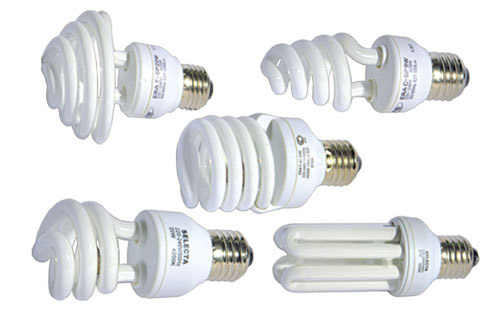
Number 4. LED lamp
LED bulbs are the pinnacle of light bulb evolution. They are devoid of the disadvantages characteristic of analogues, consume 6-10 times less electricity than incandescent lamps, and several times more durable than fluorescent lamps. In such lamps there are no tungsten spirals or harmful substances - the light source is an LED, the complex principle of which makes it possible to do without the use of dangerous and toxic compounds.
LED lamp can be part of a one-piece LED downlight or sold as a replaceable light bulb. The latter becomes the object of our attention.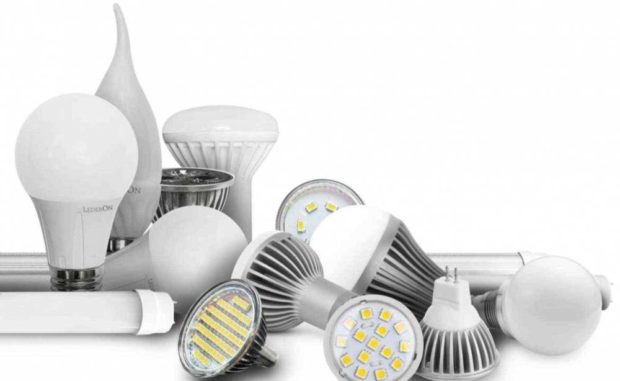
The main advantages of LED lamps:
- complete safety and environmental friendliness;
- economical energy consumption. LED lamp is 2-3 times more economical than fluorescent, and 6-10 times - than an incandescent lamp;
- long service life, from 20,000 to 50,000 hours or more. If you turn on such a lamp every day for 6 hours, then we get about 9 years of service (this is if you take a lamp with a resource of 20 thousand hours);
- lack of heating during operation;
- the absence of flickering unpleasant and harmful to the eyes;
- the LED lamp immediately after switching on shines at maximum brightness - there is no need to wait until it flares up;
- the durability of the LED lamp does not depend on voltage drops and the number of turns on;
- natural color rendition;
- high mechanical strength and small dimensions;
- ease of installation;
- For LED lamps, responsible manufacturers and sellers give a guarantee of 2-3 years, and sometimes more.

Main disadvantage such lamps - a high price. There is an opportunity to save - lamps of nameless Chinese manufacturers, but it is better not to take them. Moreover, many Chinese and even some domestic manufacturers somewhat overestimate the characteristics of their lamps - it is better to take products from eminent European companies. LED lamps are sensitive to high temperatures, therefore, in saunas and saunas they can not be used.
No. 5. Lamp power and light output
Conventional incandescent lamps have been in use for so long that when choosing we are accustomed to looking mainly at power as a key indicator. We all understand how a 40 W or 60 W lamp will shine. The power of energy-saving lamps is several times lower (4-25 W), so for many, buying a suitable lamp raises many questions. Manufacturers make it easy for us and indicate on packages equivalent power, i.e. they tell us how the economical bulb will shine, comparing it with the luminous flux of an incandescent lamp of a certain power (for example, “8 W corresponds to 40 W” can be written on a fluorescent lamp).
The manufacturer’s care is pleasant, but educated people should understand that lamp power and light output are not the same thing, and the familiar watts are a unit of power. Luminous flux is measured in lumens. To make it easier to understand: a 40 W incandescent lamp gives a luminous flux of 470-500 lm, 60 W - 700-850 lm, 75 W - 900-1200 lm. Now, when studying the packaging of an economical lamp, you can already roughly imagine how it will shine.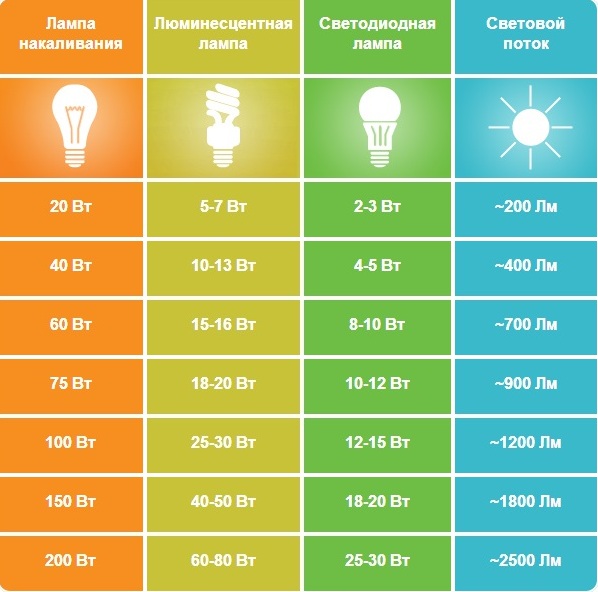
When choosing a lamp with the necessary brightness level, you can start from power equivalent. For fluorescent tubes you can use the coefficient 5: if it is indicated that the lamp has a power of 12 watts, then this means that it will shine like an incandescent lamp with a power of 60 watts. For LED this coefficient is about 7-8: a lamp with a power of 10-12 watts will shine like an incandescent lamp of 75 watts.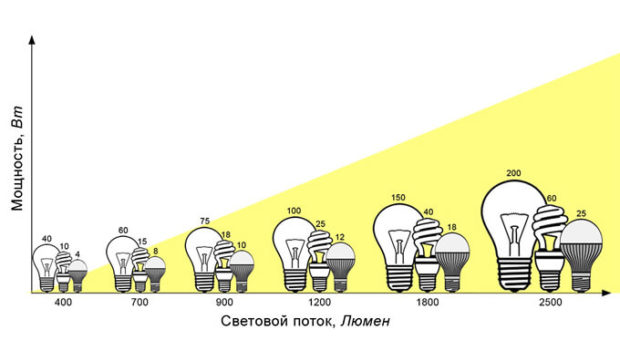
The dependence of the light flux on the power allows us to judge the efficiency of the lamp and its light output, which is measured in lm / W. Incandescent bulbs for every 1 W of consumed electricity give only 10-16 lm of light ceiling, i.e. have a light output of 10-16 lm / W. Halogen lamps have a light output of 15-22 lm / W, fluorescent - 40-80 lm / W, LED - 60-90 lm / W.
No. 6. Colour temperature
A lamp with the same power can produce light of a different shade, warmer or colder. Color temperature is measured in kelvins and must be indicated on the packaging of the lamp. On sale you can find lamps with temperature from 2700 K to 6500 K: the lower the indicator, the warmer and yellow the light will be.
When choosing, you can focus on such standards:
- to rest and relax in living quarters recommend using warm white light lamps at a temperature 2700-3300 K. It is believed that lamps up to 3500 K are suitable for relaxation, from above - for work;
- lamp up 4200-4500 K give a natural white light that can be used in the office, office, to illuminate the workplace, it is also suitable for bathrooms. In general, this option is more appropriate for public places;
- color temperature lamps 5000-6500 K They have a cold bluish glow, they are used to illuminate warehouses, salons, shops, hangars and office premises. At home, such a light is inappropriate.

It is undesirable to use lamps with different color temperatures in one room - this will cause discomfort, and if it is constant, then vision problems may occur.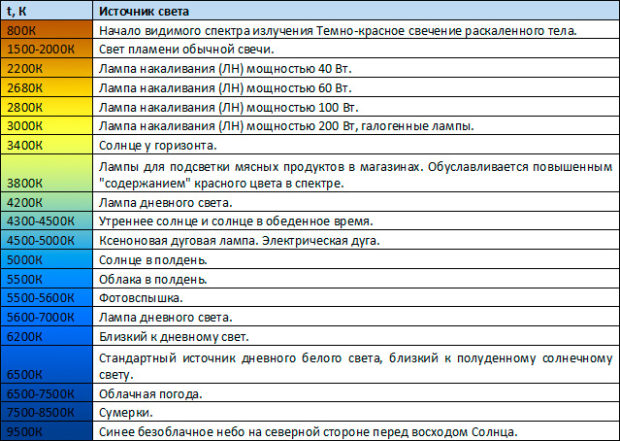
Number 7. Color rendering index
A light source can greatly affect a person’s perception of colors. We all know how the same shade can be different under different lighting conditions. The reference is sunlight, its CRI color rendering index is 100. For artificial light, this figure is slightly lower, but the closer it is to 100, the more correct and natural colors we will see. All modern energy-saving lamps have CRI 80 and more - This is normal color rendering.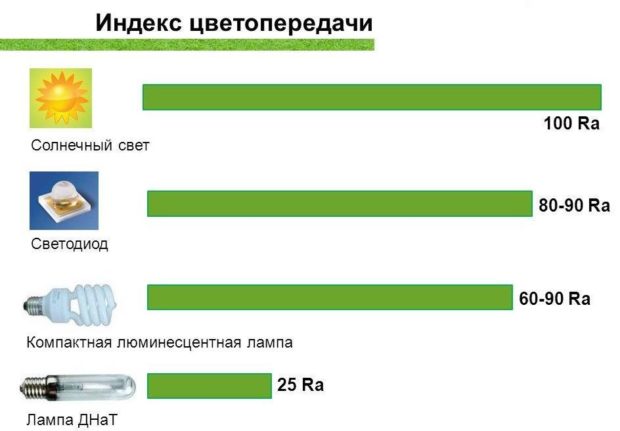
Color rendering and color temperature in the markings are encrypted three-digit codefor example, 830, where the first digit advises the color rendering index (in our case CRI 80 comes out), and the last two indicate the color temperature (3000 K).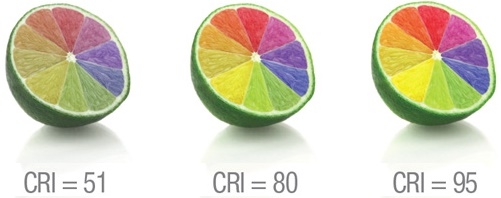
Number 8. Life time
The manufacturer usually indicates the durability in hours, but for an ordinary user this parameter may not be completely clear - it is more convenient for us to count in years. On average, under normal operating conditions, an LED lamp will live 10-15 years, a fluorescent lamp - about 5 years. Manufacturers give a guarantee on LED lamps.

No. 9. Base Type
The most popular is still considered Edison's classic base with a diameter of 27 mmwhich is designated E27. Most household luminaires are designed to install lamps with such a base. This was the standard for incandescent lamps, and manufacturers of energy-saving lamps did everything for the convenience of the user and mass-produced lamps with an E27 base. Some sconces, table lamps and small fixtures may require lamps with a smaller base - E14. In large powerful luminaires, lamps with a base are usually used E40. If it is difficult to determine with which base the lamp is needed, you can go to the store with an old incandescent lamp.
In everyday life, compact lamps with pin contacts. In them, the base is marked with the letter G and the number following it, which indicates the distance between the pins in mm, for example G10.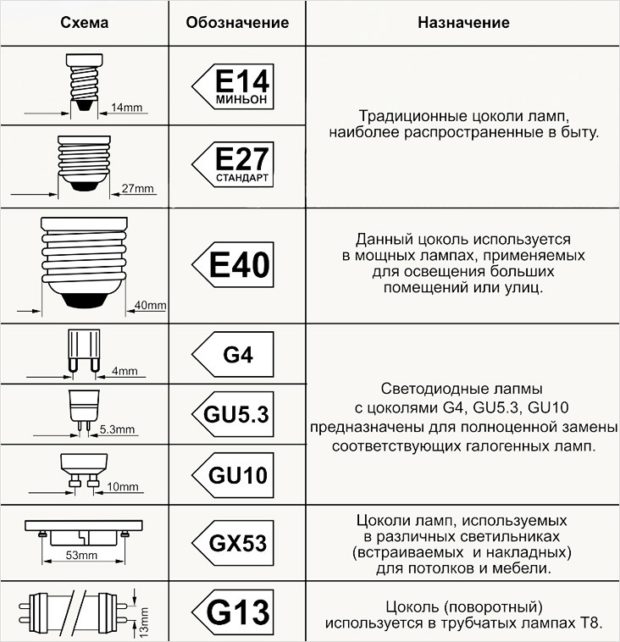
No. 10. Bulb shape and brightness adjustment
If it is necessary that the lamp gives not only light, but also performs a decorative function, then it is better to choose LED lampwhich may be in shape candles, ball etc. Halogen and incandescent lamps provide even greater choices in this regard, but saving with them will not work. Fluorescent lamps released only in the form of spirals and tubes.
If the situation with the bulb shape in energy-saving lamps is not so bad, then with the brightness control everything is much worse. Of course, it is possible to find a sample that can be connected to a dimmer, but it will be expensive, and the economical lamp still does not realize all the options for adjusting brightness. If you want to use a dimmer, it is better to take a halogen lamp.
Finally
For an energy-saving lamp to live up to your expectations, buy products of famous manufacturers (Philips, OSRAM, GE, Ecola) and ask about the warranty period. For a normal LED lamp, the warranty will be 2-3 years, not 6 months.

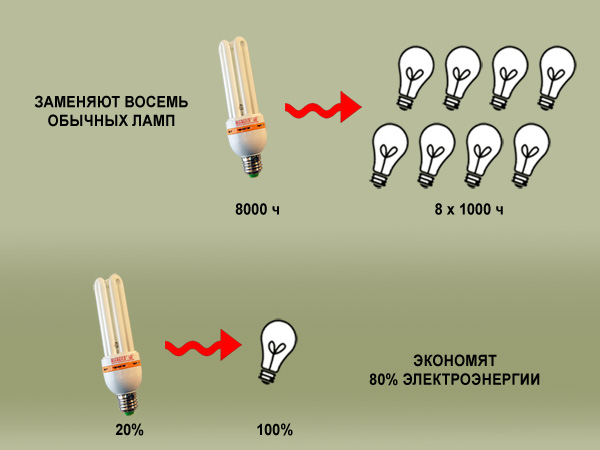
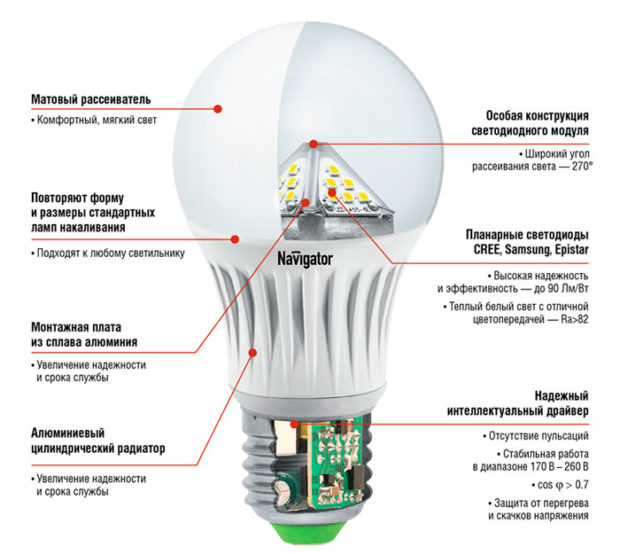
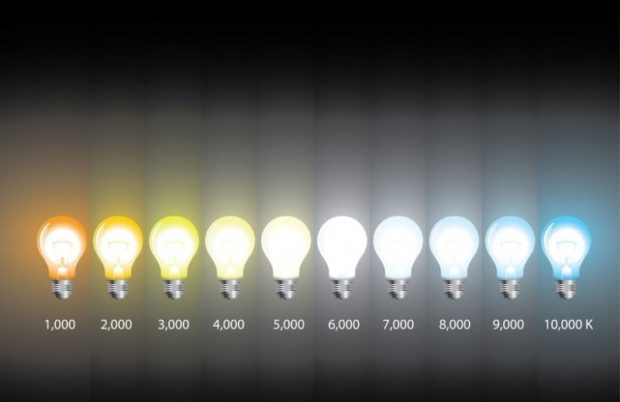
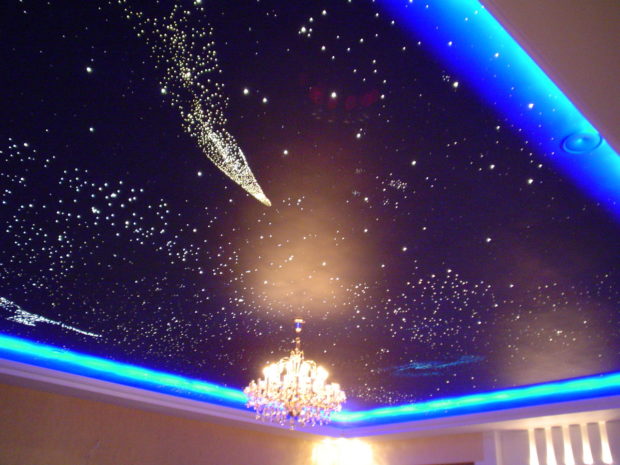
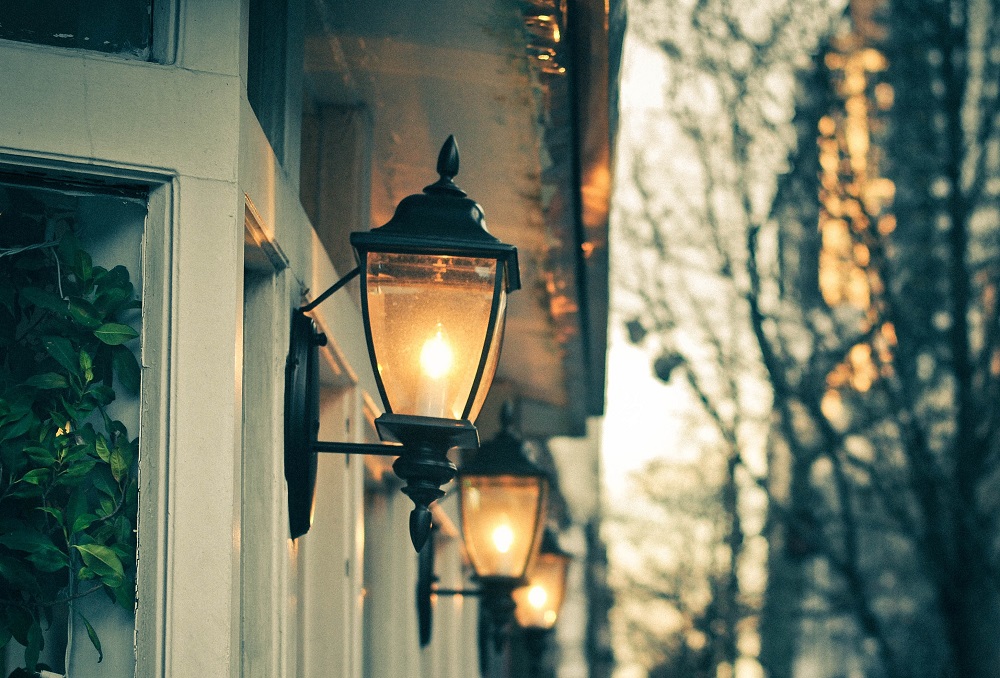
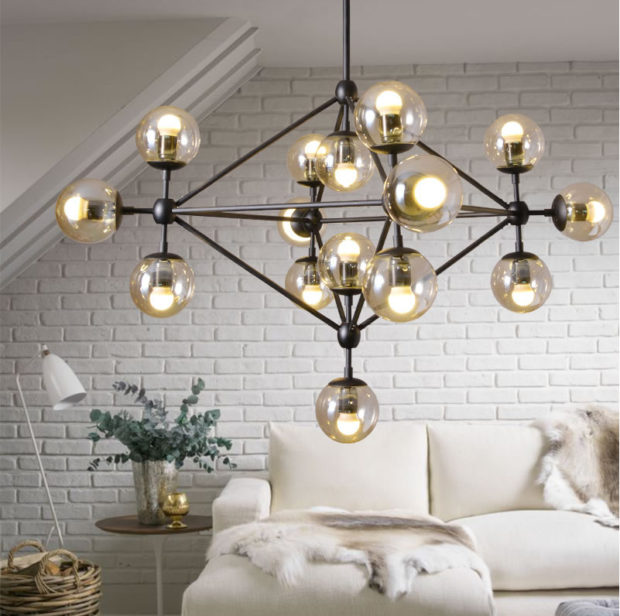
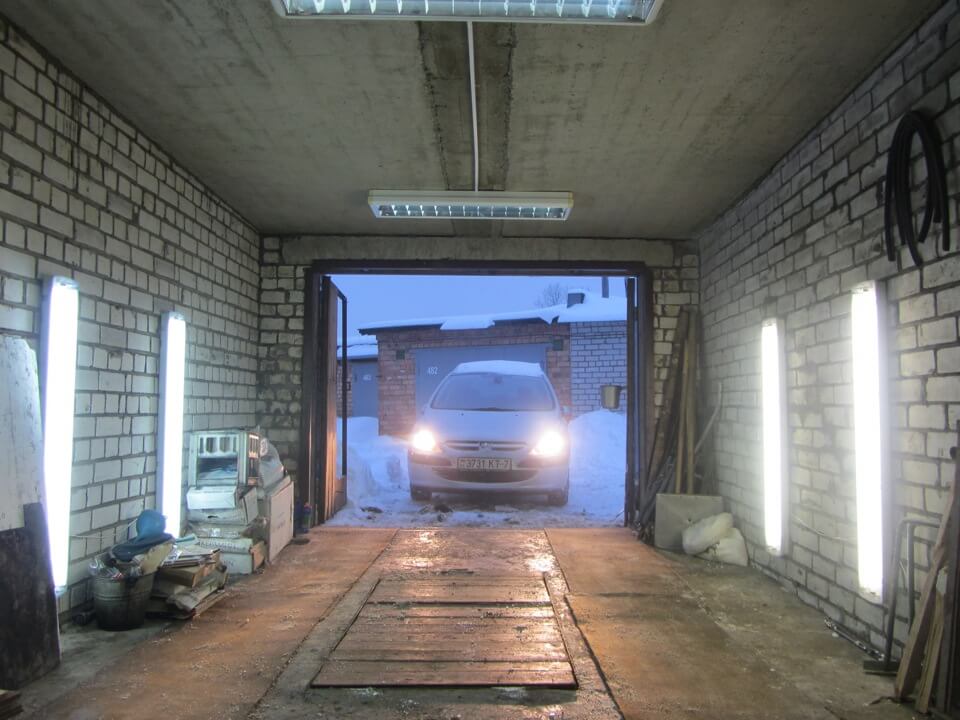
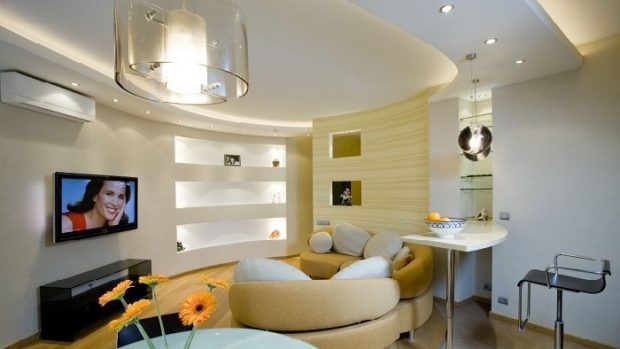
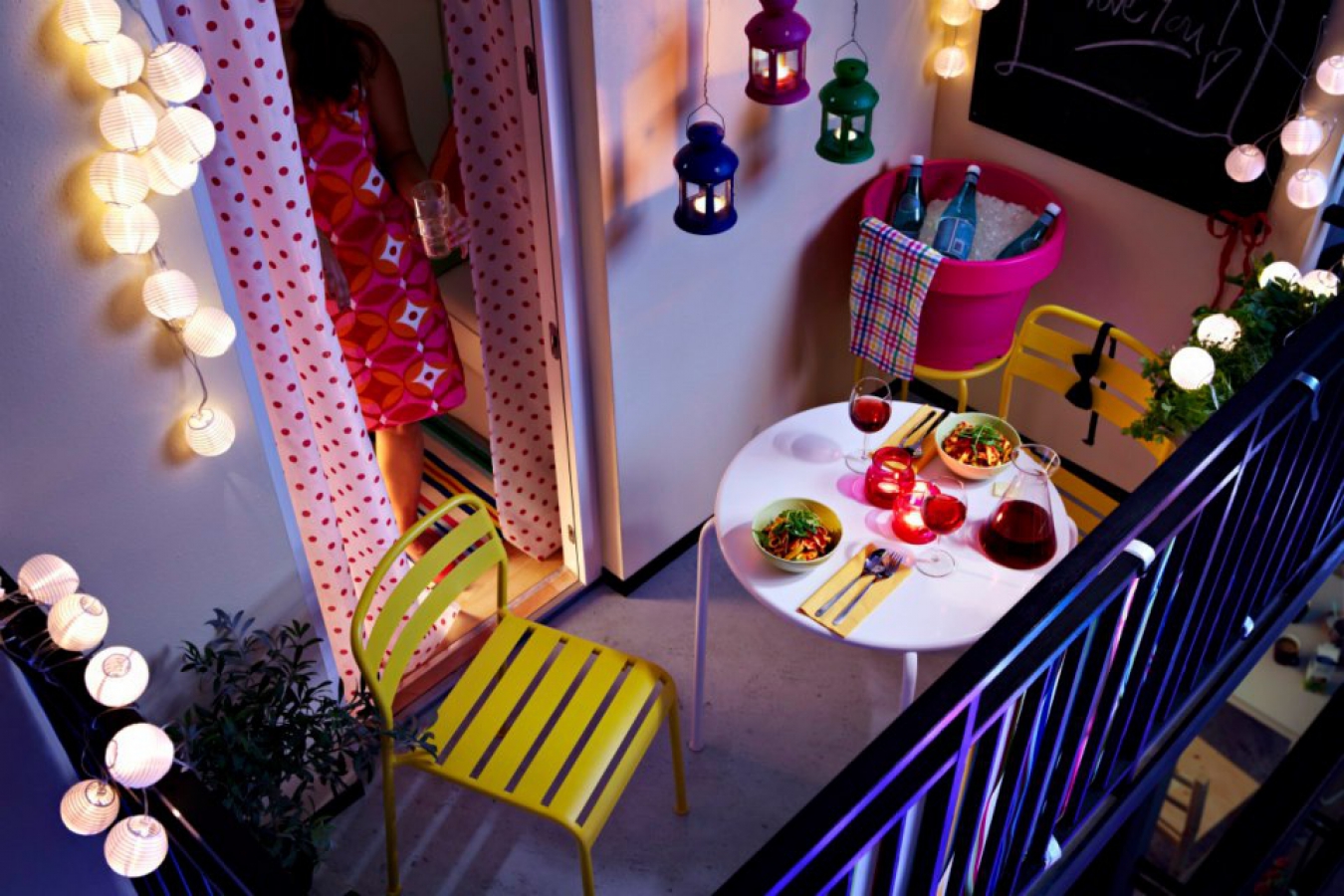
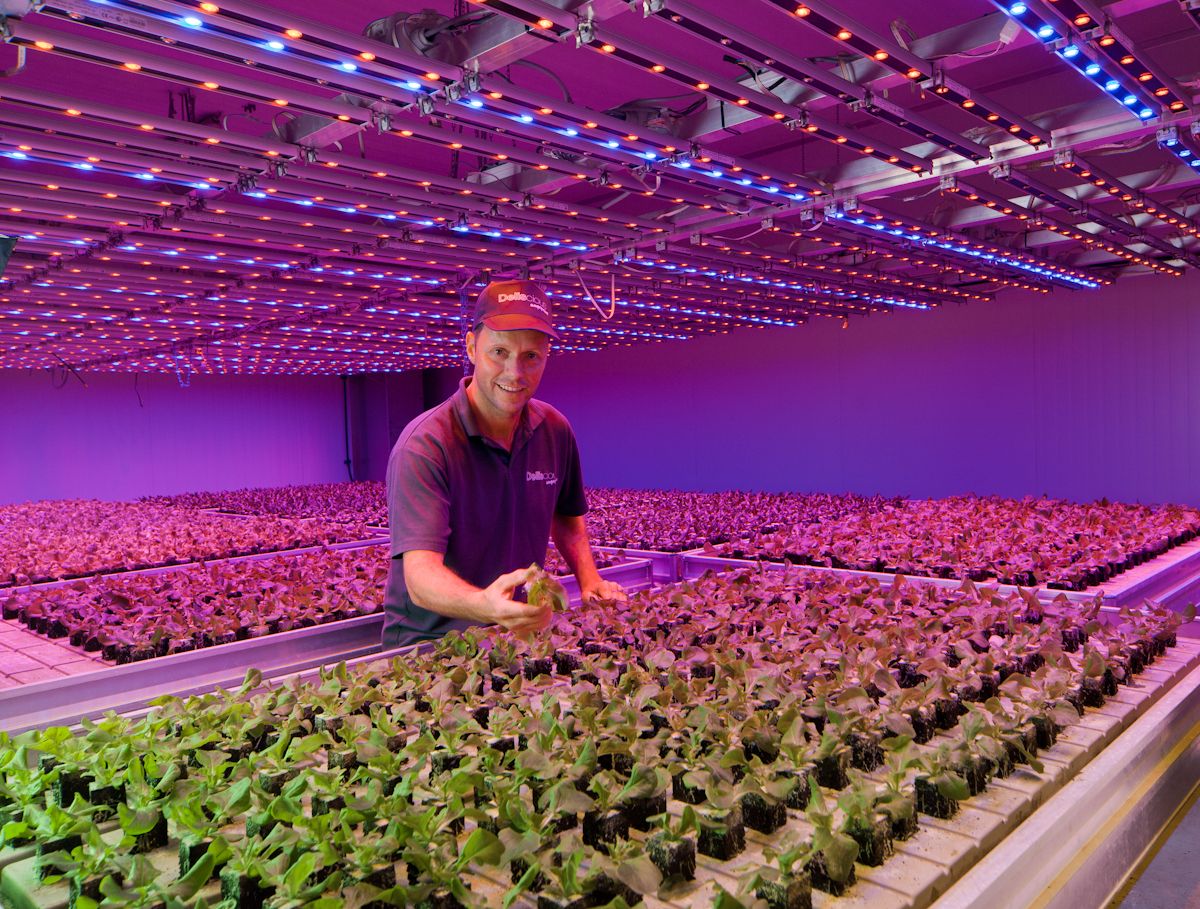
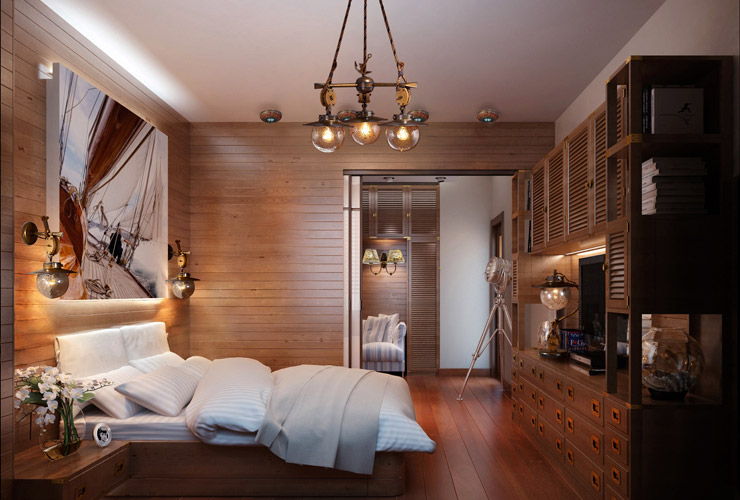
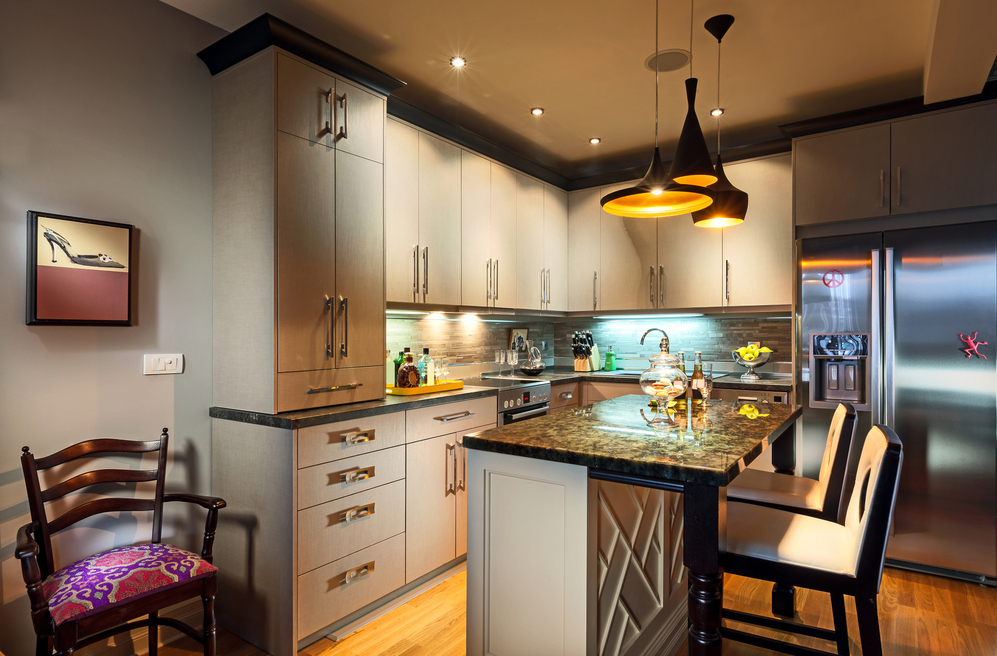
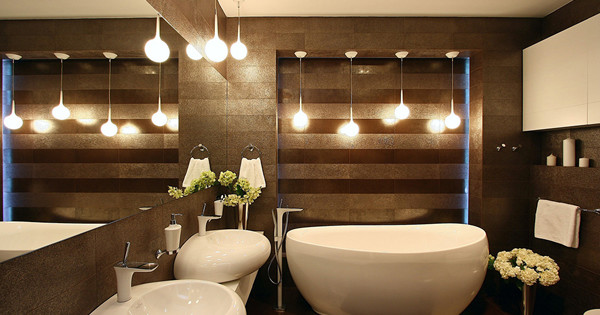
LED lamps completely suck in service life. Categories for reducing luminous flux after 6000 h are shown in Table 4 GOST R 54815-2011
A - 90%, B - 80%, C -70%, D - 60%, E - 50%
That is, a category E LED lamp will shine twice as bad. What is the period of 50,000 hours? It will shine like a kerosene !!!